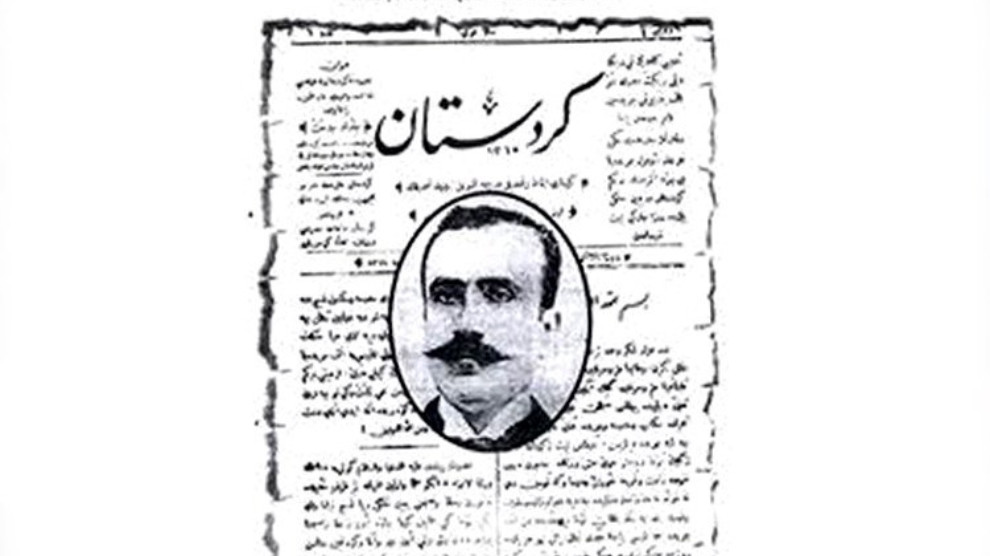Kurdish journalism in Rojhilat
Kurdish journalism has had similar adventures in all parts with the fall of the Ottoman Empire and the fracturing of Kurdistan into four.
Kurdish journalism has had similar adventures in all parts with the fall of the Ottoman Empire and the fracturing of Kurdistan into four.

Having marched with the Kurdish people’s struggle for freedom in all four parts of Kurdistan, Kurdish journalism turns 122 today. Kurdish journalism has gone through a process mirroring the struggles of the Kurdish people, and its first seeds were planted in exile.
On April 22, 1898 in Cairo, Egypt, the Kurdistan newspaper was published by Mikdad Midhad Bedirxan, and it is considered the birth of Kurdish journalism. Despite exiles, murders, pressures, bans, obstacles and shut-downs, Kurdish journalists have continued to publish in all four parts of Kurdistan and in exile for 121 years and they celebrate April 22 as Day of Kurdish Journalism.
Kurdish journalism has had similar adventures in all parts with the fall of the Ottoman Empire and the fracturing of Kurdistan into four. Its biggest lunge was undoubtedly with the Free Press tradition that developed in parallel with the Kurdish Freedom Movement. Journalists from all four parts of Kurdistan spoke to the ANF on the Day of Kurdish Journalism, and said they believe Kurdish journalism mirrors the Kurdish people’s struggle for freedom.
KURDISH JOURNALISM IN ROJHILAT
Rojhilat was separated from the other 3 parts of Kurdistan much earlier, in 1639 with the Treaty of Qasr-e Shirin. The first instances of journalism there were seen in the 1920s. When the Pehlewi Dynasty came to power in Iran in 1920, the history of Kurdish media started with the Roji Kurd newspaper. In parallel with political developments in Rojhilat, the Nishtiman newspaper was published in 1943, led by Jiyaneweyi Kurd (JK). In the Kurdish Republic of Mahabad in 1946, several newspapers and journals including Hawari Kurd, Kurdistan, Helale, Hawari Nishtiman and Girugali Mindalani were published. In months before the Islamic revolution and for some months after as well, several newspapers and journals had short publication lives, but the Islamic regime steamrolled Kurdish press tradition and journalistic activity had to move out of Rojhilat.
MELSA KELHOR: A RESISTANCE AGAINST TYRANNY
Melsa Kelhor, who works as an ANF editor in secret in Rojhilat, said Kurdish journalism is “above all, a resistance against tyranny. Because tyranny is built on lies, and fighting the lies with the power of the truth is a duty for journalism.”
Kelhor added: “Dozens of journals and newspapers were published in the last century in Rojhilat, and they were all banned. Why? Because the regime wanted to create a false identity and these publications were seen as an obstacle on the path to that. The regime means fear, pressure, torture and executions. The Iranian regime is the biggest jailer of journalists in the world now. If you want to work as a journalist here, there are two paths for you: To serve the regime, or to prepare for prison and torture. Another path is mine, to work in secret, or to head to exile.”
JOURNALISM WITH PROMISE
Melsa Kelhor said despite all the pressure from the regime, there is great activity in Rojhilati and Iranian society and that it also reflects on journalistic activity: “But despite all shortcomings, journalism has also had great leaps in this part. Internet journalism in recent years has created great developments. Another thing is that with increased societal activity in Rojhilat, journalistic activity gained important momentum. There are also developments in Iran. That is also promising, although there are risks too.”
TERZE EBASI: IRAN IS A PRISON FOR JOURNALISTS
Terze Ebasi, who left Rojhilat due to the pressure and works as a journalist in Southern Kurdistan now, said Kurdish media has always faced pressure. Jin TV Reporter Terze Ebasi said Rojhilat and Iran are “a prison for journalists” and added: “Journalists are in prison in Rojhilat. It’s a prison for journalists. There were some protests in Iran and Rojhilat last year, many journalists were detained in iran then and they are still unaccounted for. The situation in Rojhilat is no different.”